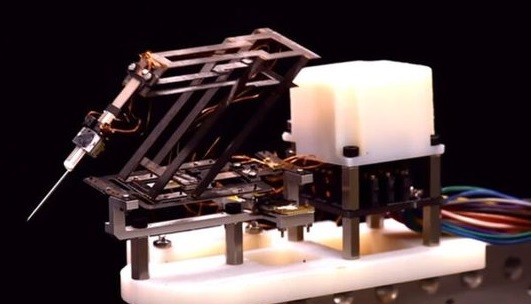Futuritsm recently unveiled a miniature surgery robot built by researchers at Harvard in collaboration with Sony.
The new robot is a tiny surgeon that was origami-inspired. With an overall size of a tennis ball the tiny Origami-inspired robot weighs just a penny.
Considering its tiny size, the robot was able to carry out tricky mock surgical operations based on the details unveiled by the Nature Machine Intelligence.
Considering the need to reduce human errors and pains during surgery, scientist had been making efforts to see how surgery could be made more safer, quicker, and with less pain.
This tiny surgeon seems to be part of the solution. Kudos to Sony and Harvard researchers.

Evidence of modern robot surgeons has proved that medical practice could become very simple and easier in time to come.
Example, one can have surgery right in the doctor’s office or at home when lots of tiny robots exist to perform different types of surgery operations.
By description, the robot can expand its shape by “popping up” like a novelty birthday card after being laser-cut out of a special laminated material, a statement revealed.
With its 3-dimensional shape, such robot could have been difficult to produce. It has three linear actuators which allow it to make up and down movements, rotate sideways, and make extension and retraction.
The actuators are made with special ceramic material that changes shape when an electric field is applied to it.
With the help of an optical sensor, the actuators are made to follow the right part based on the intended use.
The experiment carried out on the robot revealed that it has steadier hand than the hand of human surgeon.
This ability made it more efficient than human surgeon based on accuracy and low risk of encountering error while performing its task.
Based on the experiment, the tiny robot was able to puncture a mock retina vein without any mistake.
The retina vein is about twice the thickness of a human hair without causing damage.
